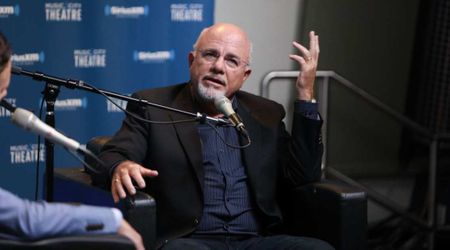Planning to retire at 65? Here's how much Americans would need to save

Most Americans plan to retire between the ages of 65 and 67, and those approaching this age often wonder if they have enough money. Tracking and budgeting for expenses during retirement is the first and the most important thing to do. However, this might be a daunting task for many, especially for those who don’t know where to begin. Thus, luckily there is data available on the typical spending patterns of a 65-year-old to help people plan. Here’s a guide for those who plan to retire around the age of 65.

The Average Spending of Retirees
The Bureau of Labor Statistics (BLS) released data in 2021 that showed the average income of someone 65 and older in 2021 was $55,335, and the average expenses were $52,141, or $4,345 per month. The report also indicated that the expenses of relatively younger retirees were more than older retirees while for people 75 or older, the expenses were $3,813 per month.
Most Common Expenses in Retirement
Housing
The BLS report showed that people who are 65 and older spend $18,872 annually for housing unless they live in a house owned by them. Given the current economic climate, this cost may be higher than in 2021, as prices are mostly up due to inflation. This may also be the largest expense for retirees.
Transportation
The next largest expense is transportation which may range between 13% to 15% of the overall expenses. While using public transportation can help reduce costs by eliminating payments on a car and fuel. Married individuals can share a car to reduce costs as well, thus the total expenses should be estimated accordingly.
Healthcare
Healthcare is one of the expenses that is expected to rise in retirement. As per the BLS data, an average American over the age of 65 spends about $7,030 each year on healthcare. This may change from person to person depending on pre-existing conditions and overall health.
Food and Utilities
As per the BLS data, food expenses and utilities cost an average of $6,490, and $3,921 respectively. These costs are also expected to rise slightly after retirement due to some added costs and special dietary needs.
Here Are Some Retirement Planning Tips
Using the 80% Rule
The 80% rule provides an estimate of expenses during retirement based on the current income of people. In the 80% rule, future retirees start the planning process by assuming they will spend about 80% of their income before retirement. The 80% figure is a great starting point to determine how much people need to save to lead a comfortable retirement.
Contribute to a Retirement Savings Plan
It is always best to invest in a robust retirement fund or contribute to an employer’s retirement savings plan, such as a 401(k) plan. The 401(k) plans are employer-sponsored retirement accounts accessible to employees as part of their benefits package. 401(k) plans facilitate consistent savings through regular contributions that are deducted from paychecks.
Create an Emergency Fund
An emergency fund can serve as a protective barrier against unexpected expenses and protect retirement savings from unforeseen emergencies. The financial cushion also prevents people from dipping into their retirement savings and keeps long-term financial plans on track.
Continue Saving and Review Retirement Plans as Needed

Generally, it’s best to fine-tune and adjust a retirement plan at least once a year. This ensures that the retirement plan remains aligned with the current situation and future goals. Retirees can also optimize their 401(k)s, or even consider additional retirement savings options available like an investment portfolio.
Editor's note: This article was originally published on March 19, 2024. It has since been updated.
























